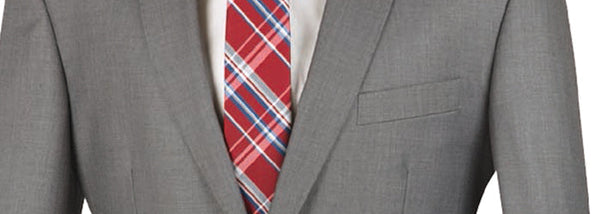Welcome to the third in a series on the anatomy of a suit. In the first part we covered the types of fit. In the second we covered the different styles of suits. Now let’s move on to the parts of a jacket. Let’s start from the very top: the lapels.
Lapels
There are basically 3 types of lapels I’ll cover today, the Notch Lapel, the Peak Label and the Shawl Lapel. Often overlooked, the lapel is a good indicator whether your jacket is dated or not. The lapel should mirror the width of the current tie trend. If skinny ties are in, then thinner lapels are more suitable. The same goes for wider ties. A skinny tie with a wide lapel or vice-a versa is not a modern look.
Notch Lapel
The most popular lapel found primarily in single-breasted jackets and coats. As the name implies, a notch, or an indentation, occurs right where the collar comes around to the front and meets the lapel. This is the safest choice when you don’t know what’s appropriate for a particular occasion. The Notch Lapel looks stylish and modern in most formal or social event.

Peak Label
The Peak Lapel is usually associated with more formal events and is common in double-breasted jackets although peak lapels on single-breasted jackets are seen as having an extra flair. The peaks point to the shoulders and with the addition of the tighter waist in a double-breasted jacket, it provides the wearer with a slimmer and taller appearance. This type of lapel is the most expensive and fashionable of all the lapels.

Shawl Lapel
Used exclusively for tuxedos and dinner jackets, this type of lapel is most suited for formal black-tie affairs and weddings. It lends an air of class and sophistication with its round and smooth edges. This is the least common of the three lapels.


